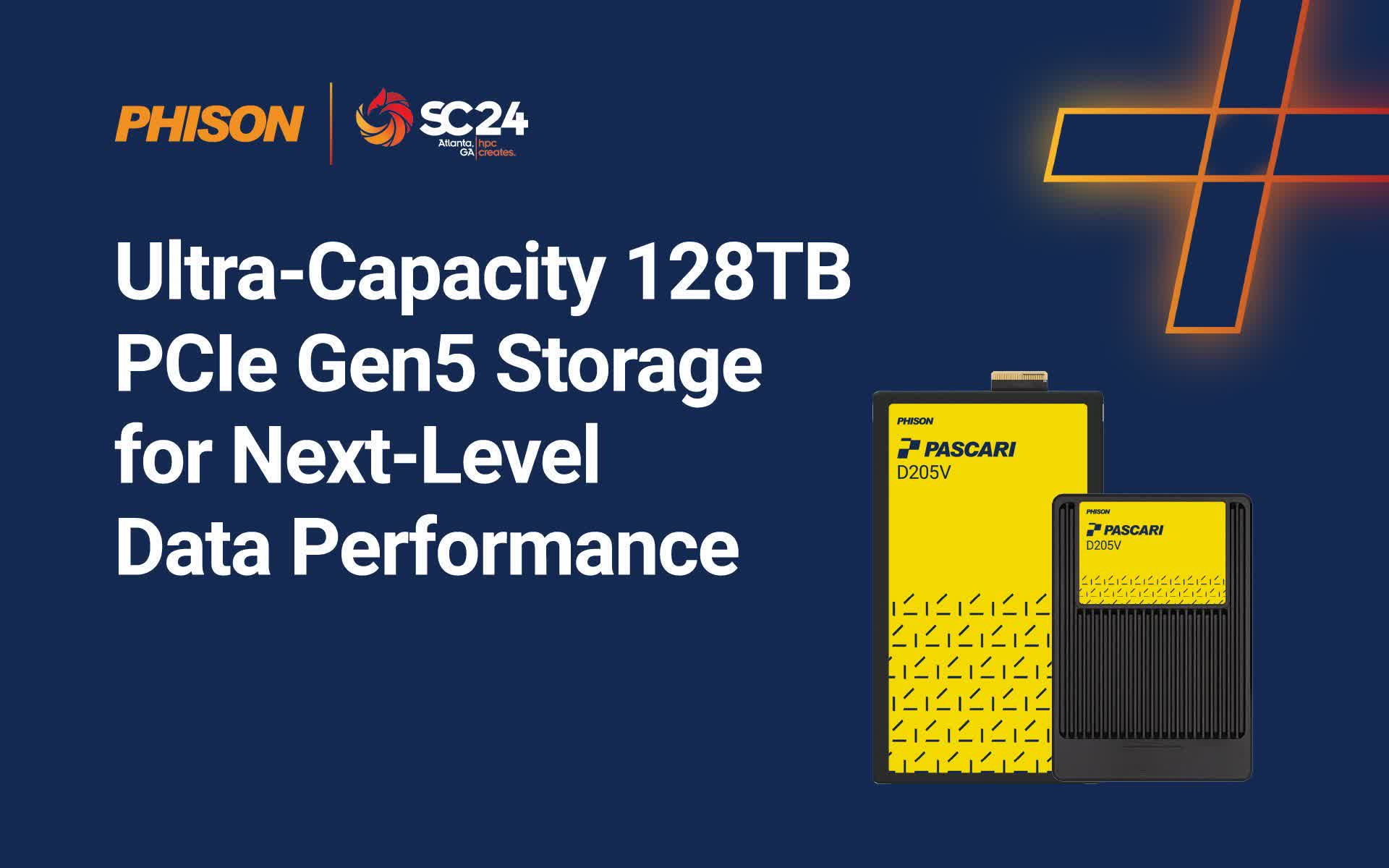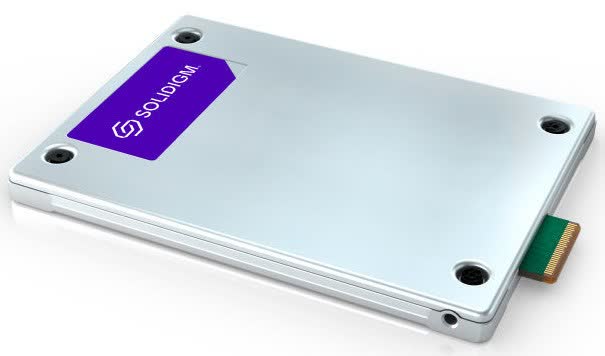In brief: When Micron unveiled its new 60TB PCIe Gen 5 data center SSD on Wednesday, the company boasted that it was pushing the technological envelope. However, Phison just leapfrogged it with a model that offers double the capacity and superior write speeds. Solidigm also just announced an SSD with similar storage space, but it only supports PCIe 4.0.
Solidigm and Phison almost simultaneously revealed upcoming data center PCIe SSDs with capacities exceeding 120TB on Thursday. The announcements come mere hours after Micron's 60TB PCIe Gen 5 SSD established a new precedent.
Micron claims that its 6550 ION is the world's first 60TB PCIe 5.0 SSD and thus the fastest drive with that capacity, with a sequential read speed of 12GB/s at 1.6 million IOPs. However, Phison's Pascari D205V holds 122.88TB – its real capacity despite being labeled as a 128TB drive – and reads at 14.6GB/s with 3 million IOPs.

Despite surrendering the lead in size and read speed, Micron's SSD maintains some advantages. For instance, it writes at 5GB/s versus Phison's 3.2GB/s. Filling the 6550 ION only takes around three and a half hours.
Micron's SSD is slightly more energy efficient, drawing just 20W while under load compared to Phison's 25W. The difference seems small but might add up when using racks full of drives. The two companies advertise their new SSDs as tools to conserve physical space and lower energy consumption. AI data centers are also an emerging target market.

The 6550 ION is available worldwide in E3.S, U.2, and E1.L form factors for limited sampling, but the public release date remains unclear. Meanwhile, pre-orders are open for the D205V, with shipping set to begin in the second quarter of next year in U.2 and E3.L formats.
Phison will demonstrate its new hardware at the SC24 event in Atlanta, which runs from November 17 to November 22. The company will also exhibit the PS7161, the world's first PCIe 6.0 redriver, with shipping expected to begin in Q1 2025.
Solidigm's 122TB D5-P5336 enterprise SSD is also available for sampling, with general availability for U.2 and E1.L form factors starting early next year. However, the drive is limited to a PCIe Gen 4 interface with a 7GB/s read speed (1.005 million IOPs) and 3GB/s write speed while drawing 23W.